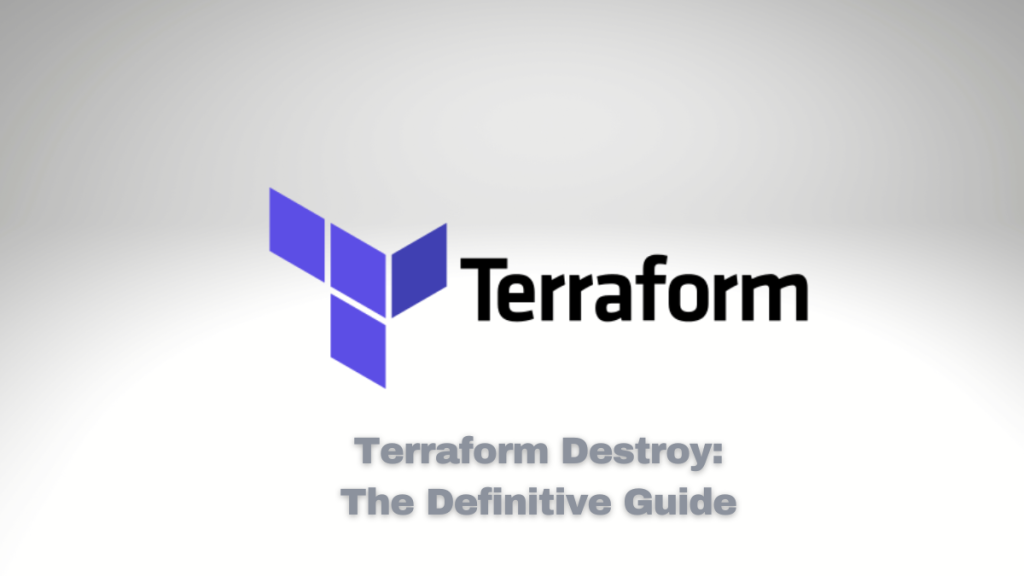Terraform is a popular open-source tool that allows infrastructure as code (IAC) management. The tool enables users to automate the provisioning and management of cloud resources by defining them in code. It provides an easy way to create, modify and delete cloud resources using simple code and syntax.
Terraform provides the destroy command to delete the resources created using the apply command. The destroy command is an essential part of the Terraform workflow, allowing users to clean up resources that are no longer needed. This blog post will discuss the Terraform destroy command in detail, including why, when, where, and how to use it.
Why use the Terraform Destroy Command?
The destroy command is used to remove resources that are no longer required. It is essential to remove these resources as they may incur additional costs or be misconfigured, causing security risks. The destroy command can also clean up resources after a failed deployment or testing.
It is essential to use the destroy command, as Terraform does not automatically remove resources. If a resource is not explicitly deleted, it will continue to exist and may incur additional costs. Moreover, leaving unneeded resources in the cloud environment can create security risks as they may be accessible by unauthorized users.
When to Use the Terraform Destroy Command?
The destroy command should be used when resources are no longer required, or misconfigurations must be corrected. For example, if a deployment fails and resources are not cleaned up, the following deployment may fail due to resource conflicts. Therefore, using the destroy command to clean up failed deployments is essential.
The destroy command can also be used in a project’s development and testing phase. When testing a new infrastructure deployment, cleaning up the resources after the testing is complete is essential. Failure to do so may result in unnecessary costs, and it can also create security risks.
Where to Use the Terraform Destroy Command?
The destroy command can be used in any environment where Terraform is deployed. It is commonly used in the cloud environment where cloud resources are managed using Terraform. The command is executed on the Terraform client and communicates with the cloud provider to delete the resources.
Ensuring that the correct credentials are configured on the Terraform client to execute the destroy command is essential. The credentials should have the appropriate permissions to delete the resources. For example, if the resources are in an AWS account, the Terraform client should have the appropriate AWS IAM permissions to delete the resources.
How to Use the Terraform Destroy Command?
The destroy command is executed using the terraform destroy command. The command requires the duplicate configuration files used in the apply command. Therefore, ensuring that the configuration files are available on the Terraform client is essential.
The following is an example of how to use the Terraform destroy command:
$ terraform destroy
The above command will delete all the resources created using the apply command. However, this may not be ideal in some situations, as it may result in the deletion of critical resources.
The destroy command supports several parameters that allow users to specify which resources to delete. The parameters can select resources based on specific criteria such as resource tags, names, or types.
The following is an example of how to use the Terraform destroy command with parameters:
$ terraform destroy -target=aws_instance.web -auto-approve
The above command will delete the AWS EC2 instance named “web” and automatically approve the deletion without user confirmation.
The following is a list of parameters that the Terraform supports destroy command:
target: Specifies the resource to delete. The parameter accepts a resource name, resource type, or resource ID. The target parameter can be used multiple times to delete multiple resources.
auto-approve: Specifies that the command should automatically approve the deletion without user confirmation.force: Specifies that the resources should be deleted forcefully, even if they are being referenced by other resources.input: Specifies that the command should prompt the user for input before deleting the resources.var: Specifies the value of a variable used in the Terraform configuration files.var-file: Specifies the path to a file containing variable values.state: Specifies the path to the Terraform state file.
Behind the Scenes
When the Terraform destroy command is executed, it communicates with the cloud provider to delete the resources. The command first reads the Terraform state file to determine which resources to delete. The Terraform state file is a JSON file that contains information about the resources managed by Terraform.
The destroy command then generates a plan that outlines the resources to be deleted. The plan includes the order in which the resources will be deleted and any dependencies between the resources.
The plan is then executed, and the resources are deleted in the specified order. The cloud provider may take some time to delete the resources, and the Terraform client may wait for the resources to be deleted before moving to the following resource.
Conclusion
The Terraform destroy command is an essential part of the Terraform workflow. It allows users to delete resources that are no longer required or have misconfigurations. Using the destroy command to avoid unnecessary costs and reduce security risks is essential.
The command supports several parameters that allow users to select which resources to delete. The parameters can be used to select resources based on specific criteria, such as resource names or resource types.
When executed, the command communicates with the cloud provider to delete the resources. The command generates a plan that outlines the resources to be deleted and the order in which they will be deleted.
Overall, the Terraform destroy command is a powerful tool enabling users to manage cloud resources easily. Understanding how to use the command correctly is essential to avoid unintended consequences.

